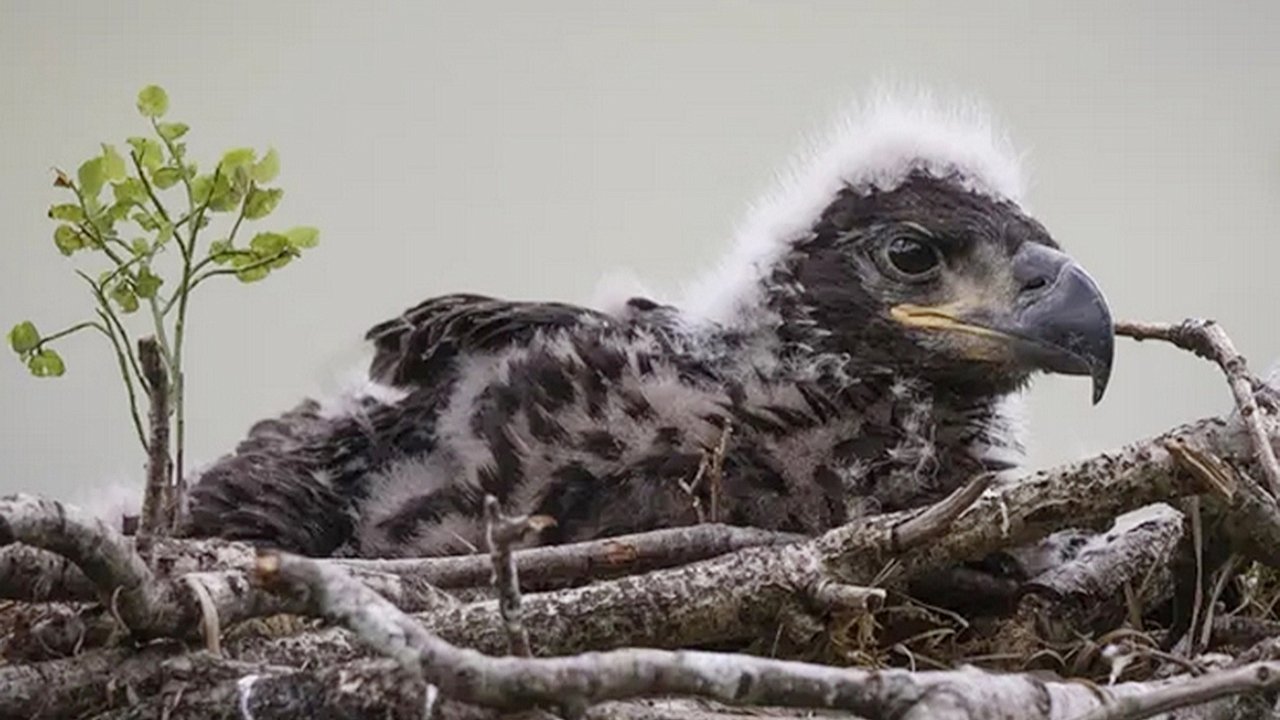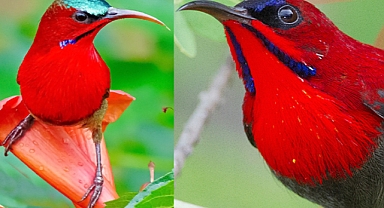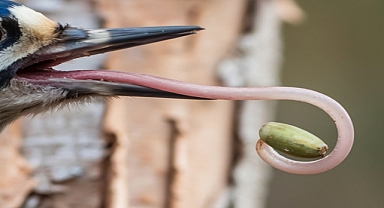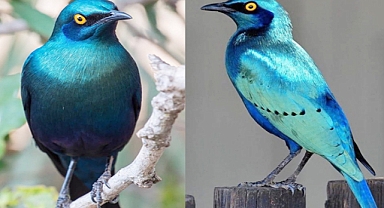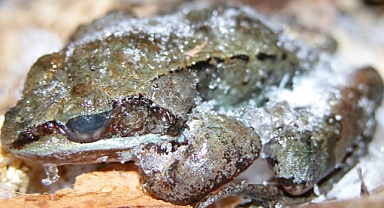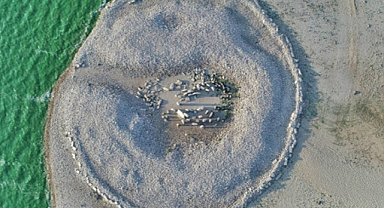The White-Tailed Eagle’s Remarkable Return to BritainThe white-tailed eagle, also known as the sea eagle or fish eagle, has made a historic comeback to England. For the first time in over two centuries, the mighty wings of Britain’s largest bird of prey were seen gliding over the country’s skies, thanks to focused reintroduction efforts. These eagles, once commonly seen across England, were last spotted on Culver Cliff on the Isle of Wight in 1780, where they eventually disappeared due to illegal hunting and human encroachment.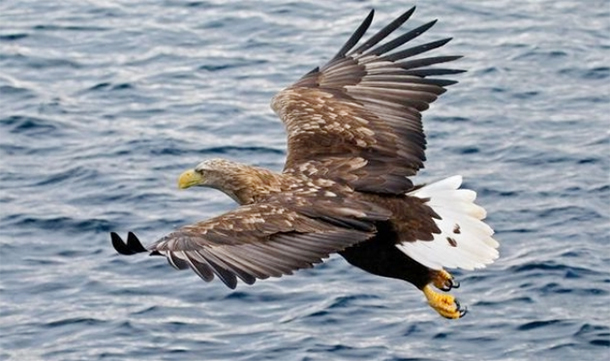 A Story of ExtinctionWith wingspans stretching to an impressive 2.5 meters, white-tailed eagles were among the most breathtaking sights in the British Isles. But by 1918, the species was driven to extinction in the UK, with the last known bird shot in the Shetland Islands, Scotland. This decline mirrored similar trends across Europe, where these birds faced extensive persecution that reduced their numbers dramatically. According to the Royal Society for the Protection of Birds (RSPB), the white-tailed eagle’s disappearance was part of a broader tragedy of raptor extinction in Europe during this period.A New Chapter in ConservationThe bird’s return is the result of a dedicated effort by Forestry England and the Roy Dennis Wildlife Foundation. Specialists gathered young eagles from wild populations in Scotland and transported them to the Isle of Wight as part of a five-year reintroduction project. Roy Dennis, the founder of the Roy Dennis Wildlife Foundation, expressed his deep pride in seeing these eagles take flight over English soil once more. "Watching them soar above the Isle of Wight has been an unforgettable moment," he remarked.
A Story of ExtinctionWith wingspans stretching to an impressive 2.5 meters, white-tailed eagles were among the most breathtaking sights in the British Isles. But by 1918, the species was driven to extinction in the UK, with the last known bird shot in the Shetland Islands, Scotland. This decline mirrored similar trends across Europe, where these birds faced extensive persecution that reduced their numbers dramatically. According to the Royal Society for the Protection of Birds (RSPB), the white-tailed eagle’s disappearance was part of a broader tragedy of raptor extinction in Europe during this period.A New Chapter in ConservationThe bird’s return is the result of a dedicated effort by Forestry England and the Roy Dennis Wildlife Foundation. Specialists gathered young eagles from wild populations in Scotland and transported them to the Isle of Wight as part of a five-year reintroduction project. Roy Dennis, the founder of the Roy Dennis Wildlife Foundation, expressed his deep pride in seeing these eagles take flight over English soil once more. "Watching them soar above the Isle of Wight has been an unforgettable moment," he remarked.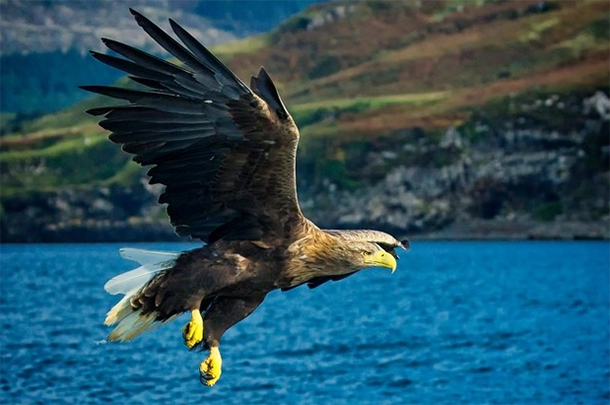 Each eagle is equipped with a GPS tracker, allowing conservationists to monitor their movements. Over the summer, six white-tailed eagles were released on the Isle of Wight. Their flight patterns were both impressive and unexpected; one pair, a male and a female, ventured north to the North York Moors National Park, while another male explored southeastern England before returning to the Isle of Wight.White-tailed eagles typically begin breeding at around four to five years of age. As the team closely observes these young birds, they hope that at least one breeding pair will settle in England and produce offspring, helping restore this iconic bird to the British landscape.Unique Hunting StyleWhite-tailed eagles have a distinct hunting strategy that reflects their calm and patient nature. Known as "sit-and-wait" hunters, they prefer to find elevated perches where they can quietly observe the landscape and wait for their prey, rather than flying long distances in search of food.
Each eagle is equipped with a GPS tracker, allowing conservationists to monitor their movements. Over the summer, six white-tailed eagles were released on the Isle of Wight. Their flight patterns were both impressive and unexpected; one pair, a male and a female, ventured north to the North York Moors National Park, while another male explored southeastern England before returning to the Isle of Wight.White-tailed eagles typically begin breeding at around four to five years of age. As the team closely observes these young birds, they hope that at least one breeding pair will settle in England and produce offspring, helping restore this iconic bird to the British landscape.Unique Hunting StyleWhite-tailed eagles have a distinct hunting strategy that reflects their calm and patient nature. Known as "sit-and-wait" hunters, they prefer to find elevated perches where they can quietly observe the landscape and wait for their prey, rather than flying long distances in search of food.
 A Story of ExtinctionWith wingspans stretching to an impressive 2.5 meters, white-tailed eagles were among the most breathtaking sights in the British Isles. But by 1918, the species was driven to extinction in the UK, with the last known bird shot in the Shetland Islands, Scotland. This decline mirrored similar trends across Europe, where these birds faced extensive persecution that reduced their numbers dramatically. According to the Royal Society for the Protection of Birds (RSPB), the white-tailed eagle’s disappearance was part of a broader tragedy of raptor extinction in Europe during this period.A New Chapter in ConservationThe bird’s return is the result of a dedicated effort by Forestry England and the Roy Dennis Wildlife Foundation. Specialists gathered young eagles from wild populations in Scotland and transported them to the Isle of Wight as part of a five-year reintroduction project. Roy Dennis, the founder of the Roy Dennis Wildlife Foundation, expressed his deep pride in seeing these eagles take flight over English soil once more. "Watching them soar above the Isle of Wight has been an unforgettable moment," he remarked.
A Story of ExtinctionWith wingspans stretching to an impressive 2.5 meters, white-tailed eagles were among the most breathtaking sights in the British Isles. But by 1918, the species was driven to extinction in the UK, with the last known bird shot in the Shetland Islands, Scotland. This decline mirrored similar trends across Europe, where these birds faced extensive persecution that reduced their numbers dramatically. According to the Royal Society for the Protection of Birds (RSPB), the white-tailed eagle’s disappearance was part of a broader tragedy of raptor extinction in Europe during this period.A New Chapter in ConservationThe bird’s return is the result of a dedicated effort by Forestry England and the Roy Dennis Wildlife Foundation. Specialists gathered young eagles from wild populations in Scotland and transported them to the Isle of Wight as part of a five-year reintroduction project. Roy Dennis, the founder of the Roy Dennis Wildlife Foundation, expressed his deep pride in seeing these eagles take flight over English soil once more. "Watching them soar above the Isle of Wight has been an unforgettable moment," he remarked. Each eagle is equipped with a GPS tracker, allowing conservationists to monitor their movements. Over the summer, six white-tailed eagles were released on the Isle of Wight. Their flight patterns were both impressive and unexpected; one pair, a male and a female, ventured north to the North York Moors National Park, while another male explored southeastern England before returning to the Isle of Wight.White-tailed eagles typically begin breeding at around four to five years of age. As the team closely observes these young birds, they hope that at least one breeding pair will settle in England and produce offspring, helping restore this iconic bird to the British landscape.Unique Hunting StyleWhite-tailed eagles have a distinct hunting strategy that reflects their calm and patient nature. Known as "sit-and-wait" hunters, they prefer to find elevated perches where they can quietly observe the landscape and wait for their prey, rather than flying long distances in search of food.
Each eagle is equipped with a GPS tracker, allowing conservationists to monitor their movements. Over the summer, six white-tailed eagles were released on the Isle of Wight. Their flight patterns were both impressive and unexpected; one pair, a male and a female, ventured north to the North York Moors National Park, while another male explored southeastern England before returning to the Isle of Wight.White-tailed eagles typically begin breeding at around four to five years of age. As the team closely observes these young birds, they hope that at least one breeding pair will settle in England and produce offspring, helping restore this iconic bird to the British landscape.Unique Hunting StyleWhite-tailed eagles have a distinct hunting strategy that reflects their calm and patient nature. Known as "sit-and-wait" hunters, they prefer to find elevated perches where they can quietly observe the landscape and wait for their prey, rather than flying long distances in search of food.